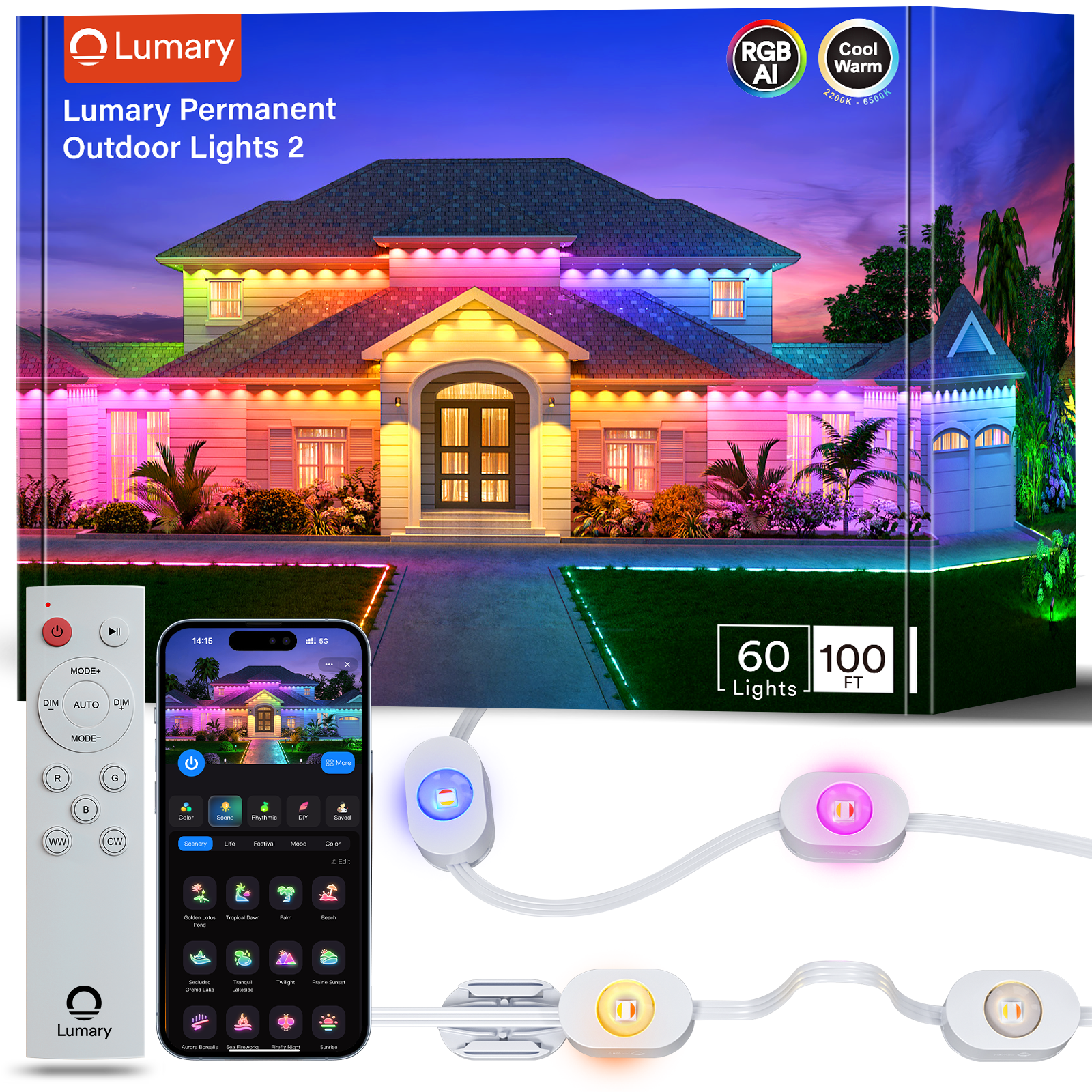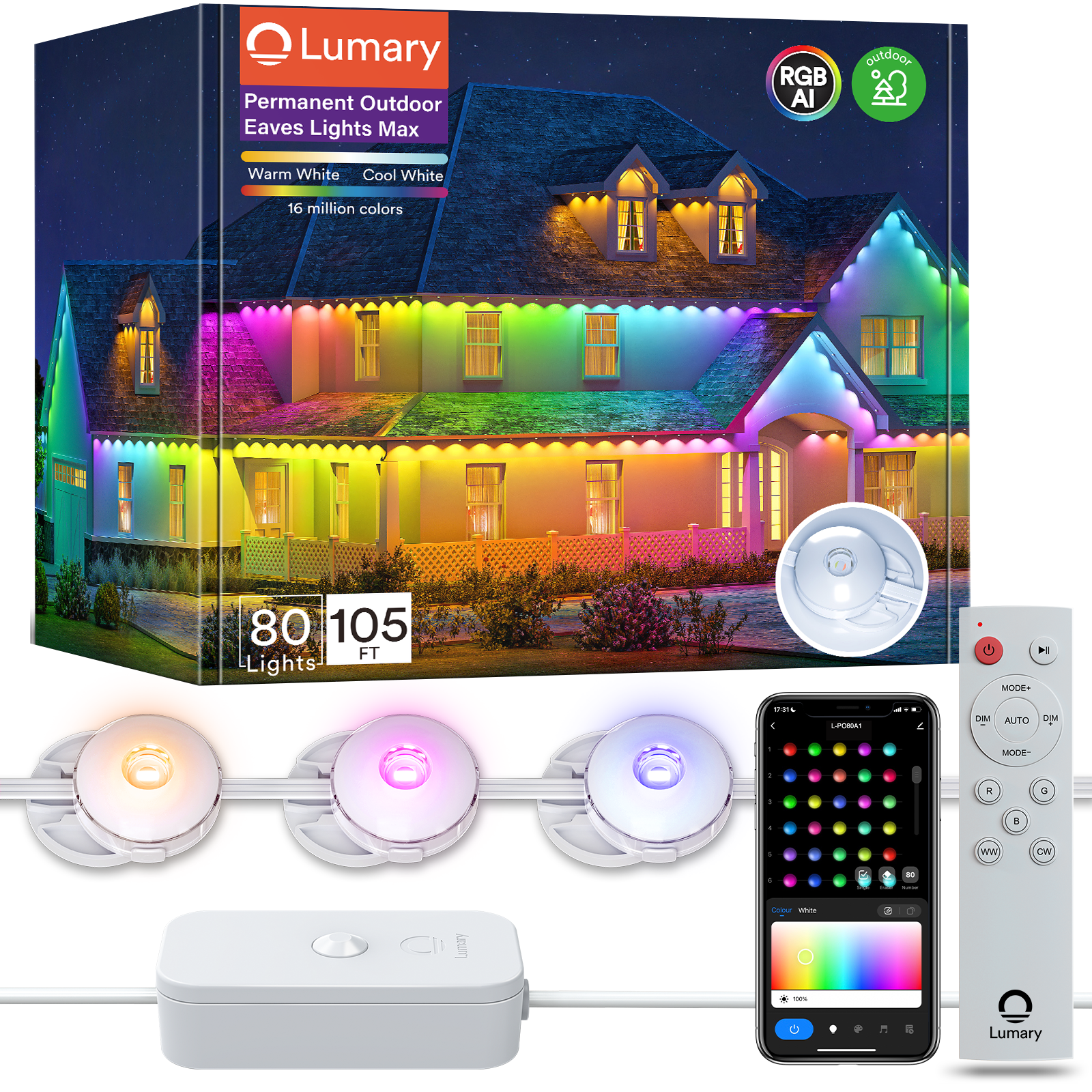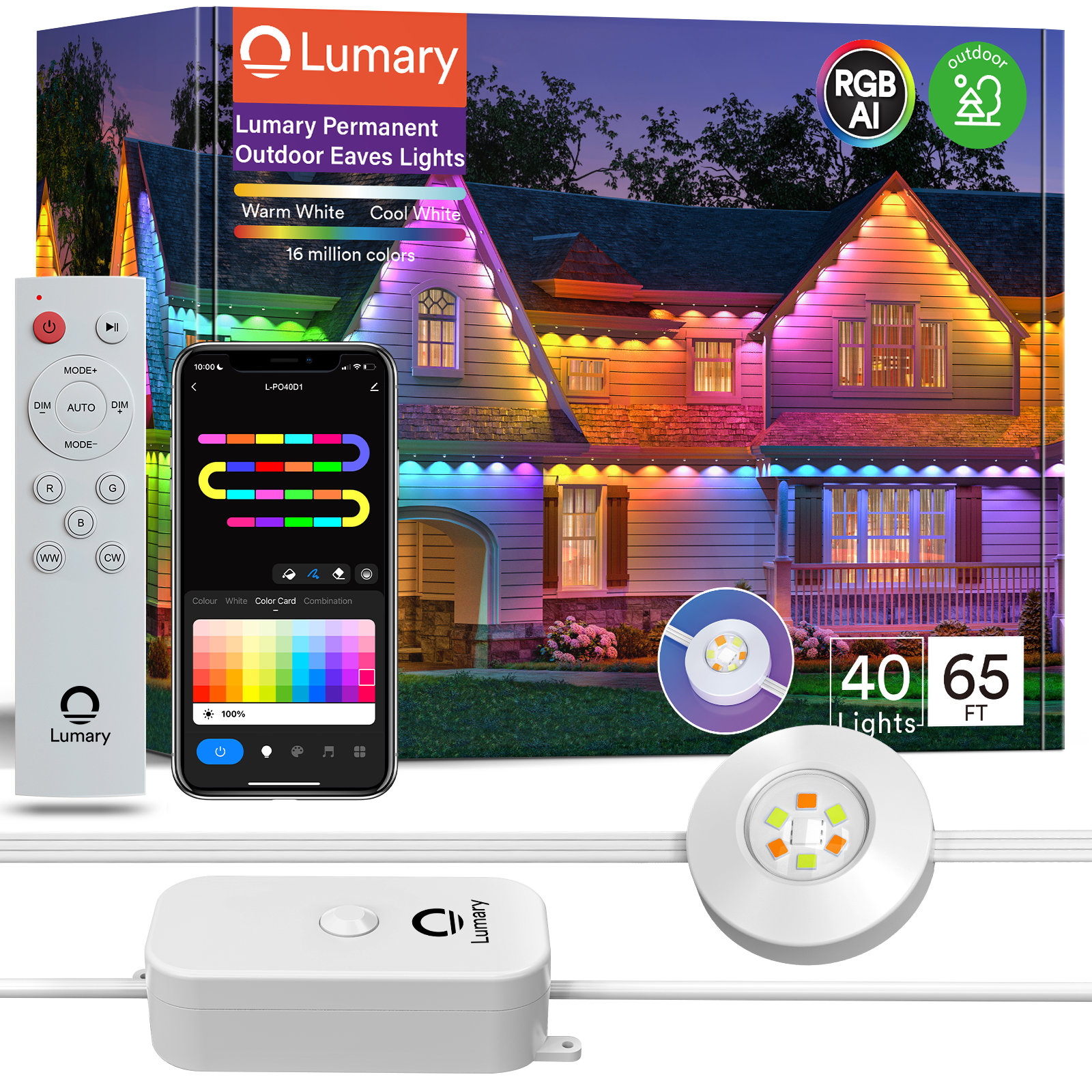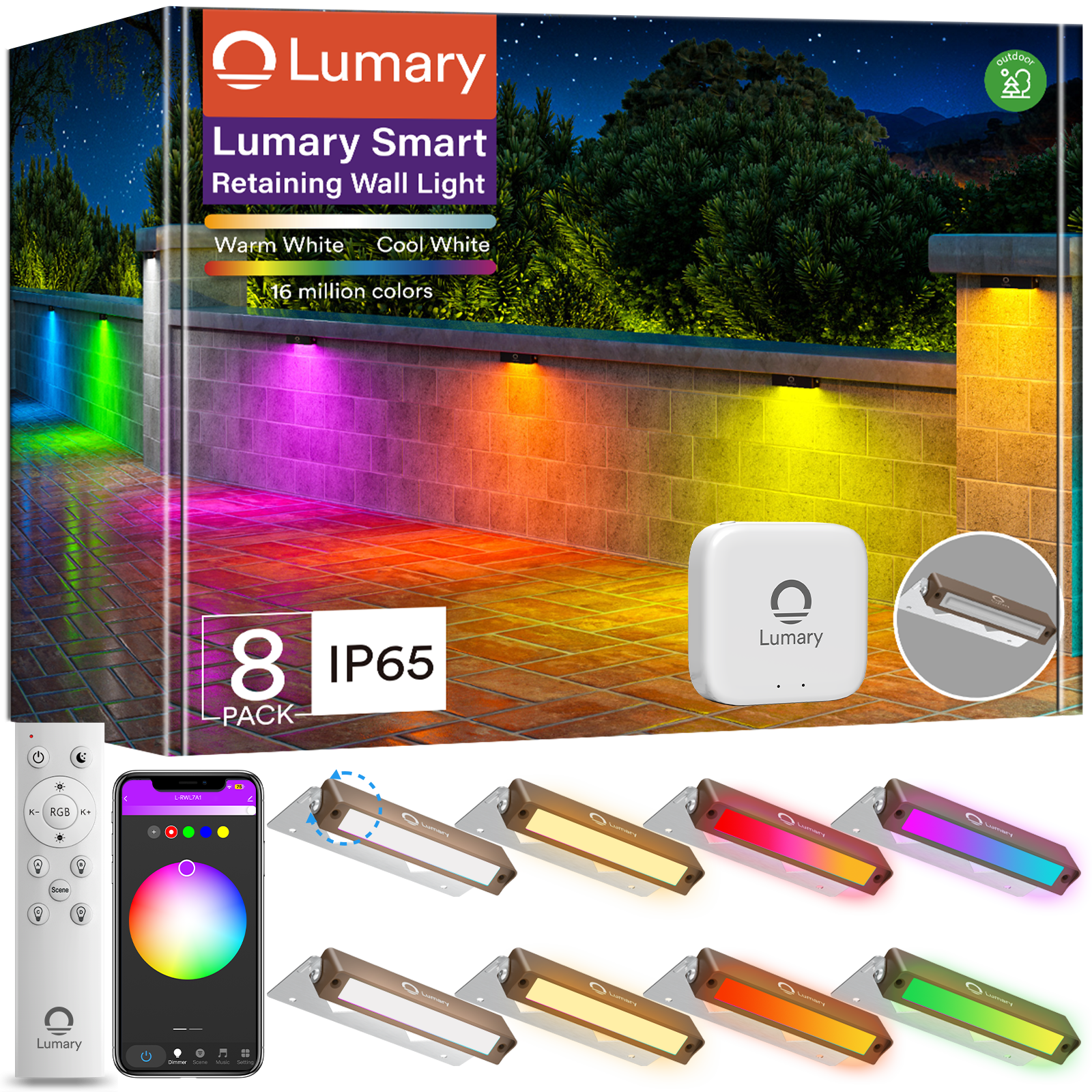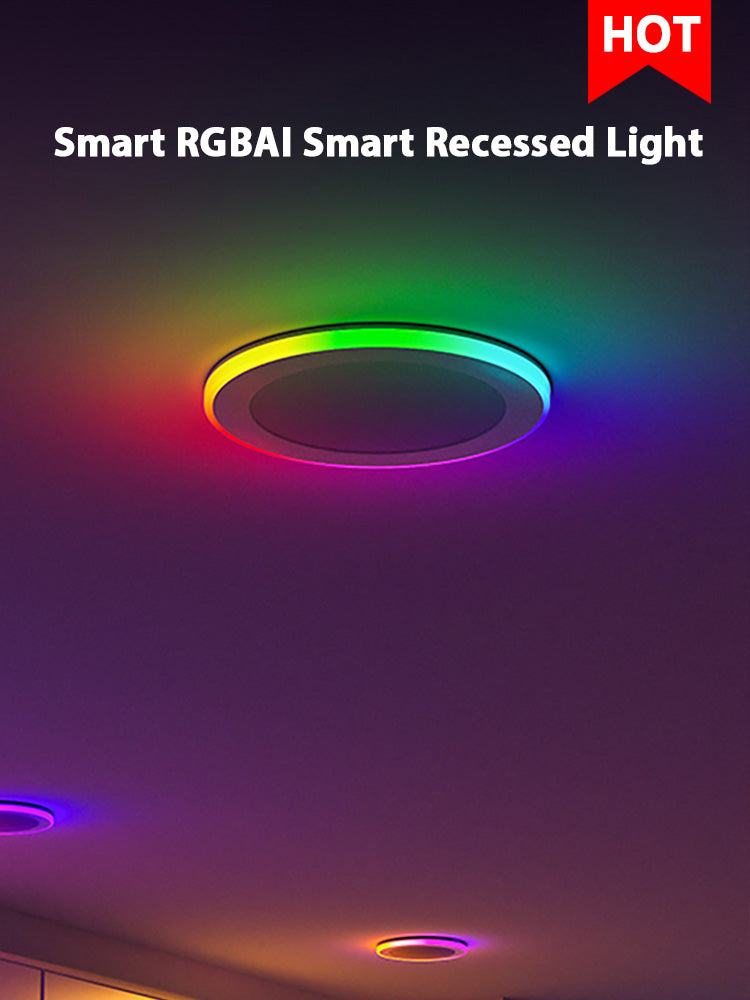Smart recessed lighting is changing how we light up rooms. It has a simple design that fits into ceilings easily. This makes it popular in modern homes. These lights are not just about looking nice. They save energy, using 75% less power than regular bulbs. This matches the trend of building eco-friendly homes. People want smart home solutions more than ever. The smart home market might grow to $174 billion by 2025. New features like central controls and automation make these lights even better. They give users a fun and custom lighting experience.
Emerging Trends in Smart Recessed Lighting
IoT Integration and Centralized Control
The Internet of Things (IoT) is changing how we use lights. Smart lights now connect to one app or device for control. This makes managing multiple lights easier at home or work. These systems save energy and improve convenience. For example, they use daylight sensors and motion detectors to adjust brightness. This helps save power while keeping rooms well-lit.
A study in the UK showed IoT lighting improves indoor comfort. Smart sensors adjusted light, temperature, and air quality for better living spaces. Designers like recessed lighting because it looks neat and blends in. This makes it a great choice for IoT-connected homes.
|
Feature |
Example |
|---|---|
|
Energy Savings |
UK study showed IoT lights save energy with daylight sensors and motion detectors. |
|
Better Indoor Comfort |
Smart sensors improved lighting, air quality, and temperature for happier occupants. |
AI-Driven Automation and User Personalization
Artificial intelligence (AI) is making lights smarter and more useful. These systems learn your habits and adjust lights to fit your needs. For example, lights can dim for movies or brighten in the morning.
Personalized lighting is now easier than ever. You can set up scenes for different moods or tasks. AI systems also work with voice commands, so you don’t need to press buttons. Some smart lamps even detect motion or adjust to room light levels.

Energy-Efficient and Eco-Conscious Technologies
Saving energy is a big focus in smart lighting today. LED lights use 80% less energy than old-style bulbs. They also cut electricity costs. In Senegal, most people want energy-saving lights, showing global interest in eco-friendly options.
Countries like Mexico and Ghana are also adopting green lighting solutions. Surveys show many households prefer energy-efficient bulbs. Choosing these lights helps the planet and saves money.
-
Benefits of energy-efficient lighting:
-
Uses less power.
-
Helps the environment.
-
Lasts longer than regular bulbs.
-
New trends in smart lighting make it easy to go green. You can save energy and still enjoy stylish, functional lighting.
Wireless and Gesture-Based Control Systems
Wireless and gesture-based controls are changing how we use lights. These systems remove the need for switches and make lighting hands-free. Picture changing your room’s brightness with a wave or using your phone to control lights without getting up.
Key Features of Wireless Lighting Control
Wireless lighting uses Wi-Fi, Bluetooth, or Zigbee to connect lights. This lets you control them from anywhere in your home.
-
Convenience: Change lights easily with your phone or tablet.
-
Flexibility: Works with smart devices like Alexa or Google Assistant.
-
Scalability: Add more lights without needing new wiring.
Tip: Pick wireless systems that match your smart home setup. This avoids problems and keeps everything working smoothly.
Gesture-Based Lighting Control
Gesture-based systems make lighting even easier. Sensors detect hand or body movements to control lights without touching anything.
-
How It Works: Sensors notice gestures like waving to turn lights on/off.
-
Applications: Great for kitchens, bathrooms, or when your hands are busy.
|
Gesture Type |
Functionality Example |
|---|---|
|
Hand Wave |
Turn lights on/off |
|
Swipe Up/Down |
Adjust brightness levels |
|
Circular Motion |
Change color temperature or light hue |
Benefits of Wireless and Gesture-Based Systems
These systems make lighting simple and help people with mobility issues.
-
Energy Efficiency: Timers and motion sensors save energy by reducing waste.
-
Enhanced Safety: No touching switches means fewer germs spread.
-
Modern Aesthetic: No bulky switches, perfect for clean, simple designs.
Note: Gesture systems are still improving. Make sure they work well before buying.
Why It Matters
Wireless and gesture-based lighting are the future of smart homes. They mix ease, style, and function for a better experience. Using these systems makes your home more connected and easy to use.
✨ Imagine this: Walking into a room and lights adjust to your liking—no switches, no apps, just simple control.
Hottest Lighting Trends 2025
Ultra-Thin and Minimalist Ceiling Lighting Designs
Minimalist designs are shaping the future of lighting. Super-thin recessed lights are now popular in modern spaces. These lights focus on being simple and blending into ceilings. They create a clean look without drawing attention to the light source. Instead, they highlight the light's effect in the room.
|
Trend Description |
Source |
|---|---|
|
Focus on simplicity, energy-saving, and blending with room decor. |
Rowabi |
|
Highlights effects of light instead of showing the fixtures. |
Decorilla |
|
Hidden LED strips and recessed lights give soft, modern lighting. |
Decorilla |
These lights are great for homes and offices with a modern style. They also meet the need for energy-saving options, perfect for eco-friendly buyers.
Tip: Choose ultra-thin lights that match your room’s style. Look for adjustable brightness for more flexibility.
Human-Centric Lighting for Circadian Rhythm Support
Human-centric lighting is changing how we light indoor spaces. It helps support your body’s natural clock, which controls sleep and mood. By copying natural light patterns, this lighting keeps you awake during the day and relaxed at night.
|
Finding |
Description |
|---|---|
|
Melanopsin's Role |
Melanopsin helps control sleep cycles and other body functions. |
|
Need for Evidence-Based Policy |
Lighting solutions should use science to improve health and comfort. |
|
Personalized Lighting |
Lighting should fit individual needs for better results. |
|
Mechanism |
Description |
|---|---|
|
Circadian Entrainment |
Light helps keep your body clock steady, improving health. |
|
Melatonin Suppression |
Proper lighting reduces melatonin, keeping you alert and happy. |
|
Alertness Enhancement |
Good lighting boosts focus and reduces mistakes at work. |
|
Impact |
Description |
|---|---|
|
Sleep-Wake Rhythms |
Special light circuits improve sleep by supporting natural rhythms. |
|
Hormone Production |
Light affects hormones, which are important for body functions. |
|
Mood and Cognition |
Good lighting improves mood and thinking, helping overall health. |
These lights are perfect for bedrooms, offices, and hospitals. They adjust brightness and color during the day to keep you comfortable and productive.
Note: Look for smart lights that support your body clock. They can help you sleep better and feel more energetic.
Customizable and Adaptive Lighting Solutions
Customizable lighting is a top trend for 2025. These systems let you change brightness, color, and direction to fit your needs. Adaptive lights go further by adjusting automatically to the time of day or sunlight in the room.
Adaptive lighting is growing fast. You’ll see it in homes, offices, and even cars. These systems save energy and make spaces more comfortable. For example, car Matrix LEDs improve visibility and reduce accidents, showing how useful adaptive lighting can be.
As smart lighting improves, customizable options are easier to find. You can now set up lighting scenes for activities like reading or relaxing. These systems also connect with smart home devices, making control simple and centralized.
Imagine this: A living room where lights dim for movies or brighten for parties—all without you lifting a finger.
Integration with Smart Home Ecosystems
Smart recessed lighting is now a big part of smart homes. These lights work well with systems like Amazon Alexa, Google Home, and Apple HomeKit. You can control them using voice commands or an app. For example, you can say, "Turn on the living room lights," and the lights will turn on right away.
A major benefit of smart lighting is centralized control. You can manage lights, thermostats, and cameras from one place. This makes daily tasks easier and saves time. For instance, you can set a "Good Night" scene to turn off lights, lock doors, and adjust the thermostat with one tap.
|
Smart Home System |
Lighting Control Features |
|---|---|
|
Amazon Alexa |
Voice control, routines, and works with other smart devices. |
|
Google Home |
App control, voice commands, and supports many smart lights. |
|
Apple HomeKit |
Secure control, automation, and works with Apple devices. |
Smart lighting also helps save energy. You can schedule lights to turn off when you leave or dim them at night. Some systems use geofencing to know when you're away and adjust lights automatically. This cuts energy waste and lowers bills.
Tip: Pick smart lights that match your smart home system. This avoids connection problems and makes setup easier.
Another cool feature is creating custom lighting scenes. You can set bright lights for work or soft lights for relaxing. These scenes can be activated with one command or scheduled for your routine.
Smart lighting isn’t just convenient—it adds security too. You can program lights to turn on and off randomly when you're away. This makes it look like someone is home and keeps intruders away.
As smart home tech improves, smart lighting will get even better. Future features might include lights that change based on your mood or habits. Adding smart lighting to your home makes it more useful and personalized for your lifestyle.
Sustainability in Smart Recessed Lighting
Use of Recyclable and Sustainable Materials
Sustainability is important in today’s lighting designs. Many companies now use eco-friendly and recyclable materials for smart recessed lights. These materials help cut waste and support reusing resources. For instance, aluminum and glass are popular because they can be recycled many times without losing quality.
Research shows the benefits of using sustainable materials. Studies found that compact fluorescent lamps (CFLs) and LEDs are better for the environment than older bulbs. Another study showed LED lights have less environmental impact than CFLs because they save more energy. A new eco-LED design even reduced environmental harm by 60% in all tests.
|
Study |
Findings |
|---|---|
|
Tähkämö et al. (2012) |
CFLs and LEDs are greener than traditional bulbs. |
|
Principi and Fioretti (2014) |
LEDs have less impact due to better energy savings. |
|
Casamayor et al. (2018) |
Eco-LEDs cut environmental harm by 60%. |
Choosing lights made from sustainable materials helps the planet. You also get stylish and useful recessed lighting.
Energy-Saving LED Technologies
LED lights have changed how we save energy. They use much less power than older bulbs, making them a great choice for smart recessed lighting. A University of Michigan study found LEDs are 44% more efficient than fluorescent tubes. This saves energy and lowers costs over time.
LEDs also last longer, need less upkeep, and don’t have harmful chemicals like mercury. Different types, like plug-and-play or hybrid LEDs, work for various needs. Switching to LED recessed lights means saving energy and money in the long run.
Reducing Environmental Impact Through Smart Lighting
Smart lighting helps the environment by encouraging better designs and usage. Environmental studies suggest ways to lower the harm caused by artificial lights:
-
Use covered fixtures to stop light pollution.
-
Install dimmer LEDs to save energy.
-
Set timers to turn off unneeded lights at night.
These steps protect nature and improve health by cutting light pollution. Smart recessed lights, with their advanced features, fit these goals well. By using them, you get modern lighting while helping the planet.
Certifications and Standards for Green Lighting
Certifications and standards help ensure smart recessed lighting is eco-friendly. Choosing lights with trusted certifications means they save energy and follow green practices.
Important Certifications
Some certifications prove that lighting is safe for the planet and uses less energy. Here are key ones to know:
-
ENERGY STAR®: Lights with this certification use less electricity and last longer. They save money and help the environment.
-
LEED (Leadership in Energy and Environmental Design): LEED-certified lights support eco-friendly buildings and energy-saving designs.
-
RoHS (Restriction of Hazardous Substances): RoHS-certified lights avoid harmful materials like mercury, making them safer for homes and nature.
-
UL Environment: This certification shows lights meet energy-saving and sustainability standards.
Why Certifications Are Important
Certified lights offer many advantages:
|
Benefit |
Description |
|---|---|
|
Energy Savings |
Certified lights use less power, cutting electricity costs. |
|
Environmental Protection |
They avoid harmful materials and promote green practices. |
|
Quality Assurance |
Certifications ensure lights work well and last longer. |
Tip: Look for certifications before buying smart recessed lights. This ensures your choice is eco-friendly and high-quality.
Standards for Green Lighting
Standards set rules for making eco-friendly lights. They help manufacturers design products that protect the environment. Key standards include:
-
ISO 14001: This global standard ensures manufacturers use sustainable methods during production.
-
IEC 62471: It checks LED lights for safety and their effects on health and nature.
-
ANSI/IES RP-16: This standard gives tips for designing energy-saving lights that reduce waste.
Knowing these certifications and standards helps you pick better lighting. Certified lights are good for the planet and provide safe, efficient, and reliable options for your home.
Practical Applications of Smart Recessed Lighting
Improving Homes with Smart Lighting
Smart recessed lighting makes homes both useful and stylish. These lights adjust to your daily habits, creating a cozy feel. For example, in a test home, a smart lighting system showed great results. It changed brightness based on people in the room and sunlight. In the evening, it gave a soft glow, and in the morning, it brightened slowly. People living there felt calmer and slept better. Studies show that lighting matching your body clock improves mood and sleep.
Research also shows smart lighting saves energy at home. A study compared smart lights to regular ones in a small apartment. The smart lights used less energy, even when on standby. They saved more energy by adjusting to when people were home. These lights also make rooms more comfortable by changing brightness and color based on your presence.
Tip: Use smart recessed lights to save energy and feel relaxed.
Upgrading Offices and Workspaces
Good lighting is key for focus and feeling good at work. Studies say 80% to 85% of what we notice is visual. Bad lighting can mess up sleep, energy, and mood. Many companies now use special lighting to help workers stay focused and happy.
Smart recessed lights also help businesses save money. Philips Lighting Research says better lighting and space use could save USD 1.5 trillion in offices. Deloitte's "The Edge" project showed smart tech, like lighting, cut space per worker by 50%.
|
Source |
Findings |
|---|---|
|
Philips Lighting Research |
USD 1.5 trillion savings with better lighting and space use. |
|
Deloitte's The Edge |
50% less space per worker using smart technology. |
Enhancing Hotels and Stores
In hotels and stores, smart recessed lighting improves customer experiences. Hotels use these lights to set a welcoming mood, changing brightness and color during the day. Stores use smart lighting to highlight products and grab attention.
For example, stores can use adaptive lighting to focus on seasonal items or sales. This makes shopping more enjoyable and boosts sales. Hotels use smart lights to relax guests at night or energize them in the morning.
Note: Smart recessed lighting adds style and function to business spaces.
Outdoor and Landscape Lighting Innovations
Outdoor lighting is getting smarter and more useful. New designs mix advanced tech with practical ideas. They improve safety, look great, and save energy.
Energy-Efficient LED Lighting
LED lights are changing outdoor lighting. They use less power but shine brighter. These lights last a long time, so you don’t replace them often. Use LEDs to light up paths, gardens, or buildings. They save money on electricity bills.
Tip: Pick LED lights for outdoor areas to save energy and spend less on upkeep.
Smart Lighting Systems
Smart outdoor lights, like Philips Hue, let you customize easily. Change brightness, colors, or set timers to fit your needs. For example, dim lights late at night or brighten them when motion is detected. These systems also connect to smart home devices for easy control.
|
Feature |
Benefit |
|---|---|
|
Customizable Settings |
Change brightness and colors easily. |
|
Motion Detection |
Adds safety and convenience. |
|
Smart Home Integration |
Control all lights in one place. |
Enhancing Outdoor Spaces
Smart lights make outdoor areas more inviting. Use them to create a cozy vibe for parties or highlight landscaping. For example, program lights to change colors for holidays or events. This makes your yard fun and welcoming.
Imagine this: A backyard where lights adjust automatically for a barbecue or a peaceful evening under the stars.
Why It Matters
New outdoor lighting ideas make spaces safer and greener. Energy-saving LEDs and smart systems cut power use while improving your outdoor experience. These tools help you create beautiful, eco-friendly spaces with ease.
Future Outlook for Ceiling Lighting Trends
The Role of Smart Lighting in Smart Cities
Smart lighting helps make cities better and more energy-efficient. It uses AI to predict when lights are needed most. This saves power and makes lighting smarter. For example, Singapore worked with UAE companies in 2023 to improve Abu Dhabi’s streetlights. The project focused on saving energy and being eco-friendly. In India, Chennai’s Smart Street Lighting program shows how smart lights can change city spaces.
Benefits of smart lighting in cities include:
-
Energy Optimization: AI changes brightness based on real-time needs.
-
Improved Safety: Bright streets lower crime and accidents.
-
Sustainability: Smart lights support greener city designs.
Tip: Cities using smart lighting save energy and become safer places to live.
Market Growth and Adoption Predictions
The smart lighting market is growing fast. By 2025, it may reach USD 24.14 billion, growing at 21.7% yearly. By 2037, it could pass USD 264.25 billion. This shows people want energy-saving and smart lighting solutions.
|
Year |
Market Size (USD) |
Growth Rate (%) |
|---|---|---|
|
2024 |
19.1 Billion |
N/A |
|
2025 |
24.14 Billion |
21.7 |
|
2033 |
77.6 Billion |
16.8 |
|
2037 |
264.25 Billion |
N/A |
New tech like IoT and AI makes smart lighting easier to use. As more homes and cities choose smart lights, the market will keep growing.
Note: Buying smart lighting now helps you stay ahead of future trends.
Challenges and Opportunities in the Lighting Industry
The lighting industry is growing but faces some problems. The market might grow from USD 154.27 billion in 2024 to USD 367.88 billion by 2032, with an 11.5% yearly growth rate. People want energy-saving products, and AI and IoT make lights smarter. But high costs and supply chain issues make things harder for buyers and sellers.
Opportunities for the industry include:
-
Technological Advancements: AI and IoT create smarter lighting systems.
-
Sustainability Goals: Green designs meet eco-friendly needs.
-
Expanding Applications: Smart lights are used in homes, offices, and public areas.
Insight: Solving problems like cost and supply chain delays will help smart lighting grow even more.
Vision for Smart Lighting Beyond 2025
The future of smart lighting is full of exciting changes. After 2025, lighting will become smarter, greener, and more connected to your surroundings.
Experts predict the next-generation lamp market will grow a lot. By 2033, it could reach USD 25.6 billion. This growth comes from better energy-saving designs and rising interest in smart home products. Governments are also encouraging eco-friendly lights to cut carbon emissions. This means you’ll see more green lighting options available.
Growing cities and new buildings will also need smart lighting. Imagine streetlights that get brighter when cars pass or parks lit by solar power. These ideas will save energy and make public spaces safer and more flexible for everyone.
Did you know? Switching to LED lights is already saving energy and helping the planet. By 2033, LEDs will likely be the main choice for homes and businesses.
Smart lighting will also work better with renewable energy. Think about a house where solar panels power your lights, and AI keeps them running efficiently. This setup will save money and help the environment.
As people learn more about smart lighting, they’ll want systems that fit their needs. You’ll be able to pick lights for relaxing, working, or anything else. The future of lighting will adjust to your lifestyle like never before.
The vision for smart lighting after 2025 is clear: smarter, eco-friendly, and more personalized solutions that improve your life and protect the Earth.
Smart recessed lighting can change how you see modern spaces. New trends help make rooms useful and look amazing. Lighting in 2025 will bring designs that fit your needs and daily life. These ideas focus on saving energy, custom setups, and working with smart tech. Learning about these updates keeps you ready for the future and helps you pick the best options for your home or office.
Tip: Check out smart lighting now to prepare your spaces and enjoy the latest features.


